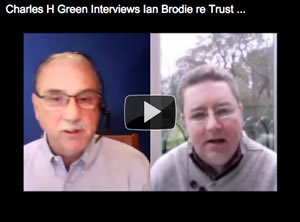Marketing
The Truth About Email
Posted on November 23rd, 2011.
“Email is dead”
“Everyone's using social media. No one reads emails these days”
“People are sick and tired of more and more email. They're overwhelmed”
Have you heard comments like this recently? Me too.
It's tempting to believe them and focus more on other ways of communicating.
Except for my business, email seems to be working just as well as ever.
Just me? Apparently not according to a bunch of market research that's been done in the last few months.
Is email being wiped out by social media?
According to research by Merkle (View from the Digital Inbox 2011) – text messaging is the preferred method of personal communication amongst 18-29 year olds and the phone is the preferred method for other age groups: email comes in a strong second, being preferred by well over double the number who prefer social media.
And when it comes to commercial communications – email sweeps the board as the preferred method with 65-78% of people preferring it. A pitiful 0-4% of people prefer social media for commercial communications.
So while many people are beginning to use social media (and especially text messaging amongst younger people) instead of email for personal communications. When it comes down to business – email is still king.
 But surely no one opens emails any more?
But surely no one opens emails any more?
It's true – average – open rates have dropped from 14% to 11.4% in the last 3 years according to MailerMailer's Email Marketing Metrics Report.
But that's largely due to more (bad) email being sent (and not opened). If your emails are still as valuable as they were 3 years ago with subject lines just as interesting – they'll still get opened.
In fact, click rates (rather more important than open rates) are as good now as they were three years ago (and better than they have been in the intervening years).
But no one wants to be “bombarded” with email
It's funny, whenever I speak to people worried about emailing too frequently and “bombarding” their customers and prospects with emails and I ask them how frequently they're currently emailing – it's usually monthly or at most weekly.
Is one email a week “bombarding”? Only if the emails have little of value in them.
In fact, I spoke to a marketing consultant earlier this week who switched to emailing his subscribers daily nearly two months ago. That's right: daily.
The results?
His open rates have remained the same. His unsubscribes have dwindled to virtually zero. And most importantly, the number of enquiries he's getting for his services from email subscribers has shot up.
I'm not saying you should email daily. But the chances are you can email more frequently and get better results. The people who object and unsubscribe when you send that one extra email a week? They were never going to become your clients anyway.
But I can't do those fancy graphical emails
You don't need to.
I got a bit cross recently when a (very) famous sales guru put up a video saying you needed to use highly graphical emails to get the attention of your prospects. (As it turns out, the guy was selling – you guessed it – a system to make graphical emails).
The facts on this are pretty clear. The best research I've seen is from MarketingExperiments a couple of years ago. They discovered that:
- Emails that use lots of graphics and formatting got 34% fewer clicks than plain text emails.
- Emails that had a little bit of formatting: the occasional underline or bold text and highlighted links got 55% more clicks than plain text.
Why is that?
Lightly formatted emails look like the emails we get from people we know and trust. Friends and business colleagues.
Graphics heavy emails look like advertisements.
So stick to neat, lightly formatted emails.
Make sure they can be read on mobile devices too. According to Knotice, 13.6% of all emails are opened on a mobile device.
Fancy graphics play havoc with mobile devices. At best, they make the text appear tiny. At worst, the email is unreadable.
So you're saying I should use email as one of my key marketing channels then?
Yup. Without a doubt.
According to the Direct Marketing Association's 2011 Report “The Power of Direct”, Email brings in $40.56 for every dollar spent on it, compared to catalogs' ROI of $7.30, search's return of $22.24, Internet display advertising's return of $19.72 and mobile advertising's return of $10.51.
Difficult to argue (too much) with those figures.
PS If you'd like more in-depth tips on email marketing – completely free – you can sign up for my series of Email Marketing Power Tips here:
 I've talked a lot on this blog about “Value In Advance” marketing: building credibility and trust with potential clients by giving them some way of sampling what it is you do.
I've talked a lot on this blog about “Value In Advance” marketing: building credibility and trust with potential clients by giving them some way of sampling what it is you do. We're back with another Authority Marketing Podcast interview.
We're back with another Authority Marketing Podcast interview. Ask any senior professional about the books that have had the most influence on them and The Trusted Advisor by David Maister, Charles H Green and Rob Galford is almost certain to be up their near the top of the list.
Ask any senior professional about the books that have had the most influence on them and The Trusted Advisor by David Maister, Charles H Green and Rob Galford is almost certain to be up their near the top of the list. I ran a private webinar over the weekend for my email subscribers where I answered questions on Pain Free Marketing.
I ran a private webinar over the weekend for my email subscribers where I answered questions on Pain Free Marketing. I read a great article recently by my friend Ford Harding and Robert Buday on getting the balance right between “pull marketing” (in particular using thought leadership to attract clients) and “push marketing” (direct outreach strategies like telesales or direct mail).
I read a great article recently by my friend Ford Harding and Robert Buday on getting the balance right between “pull marketing” (in particular using thought leadership to attract clients) and “push marketing” (direct outreach strategies like telesales or direct mail).